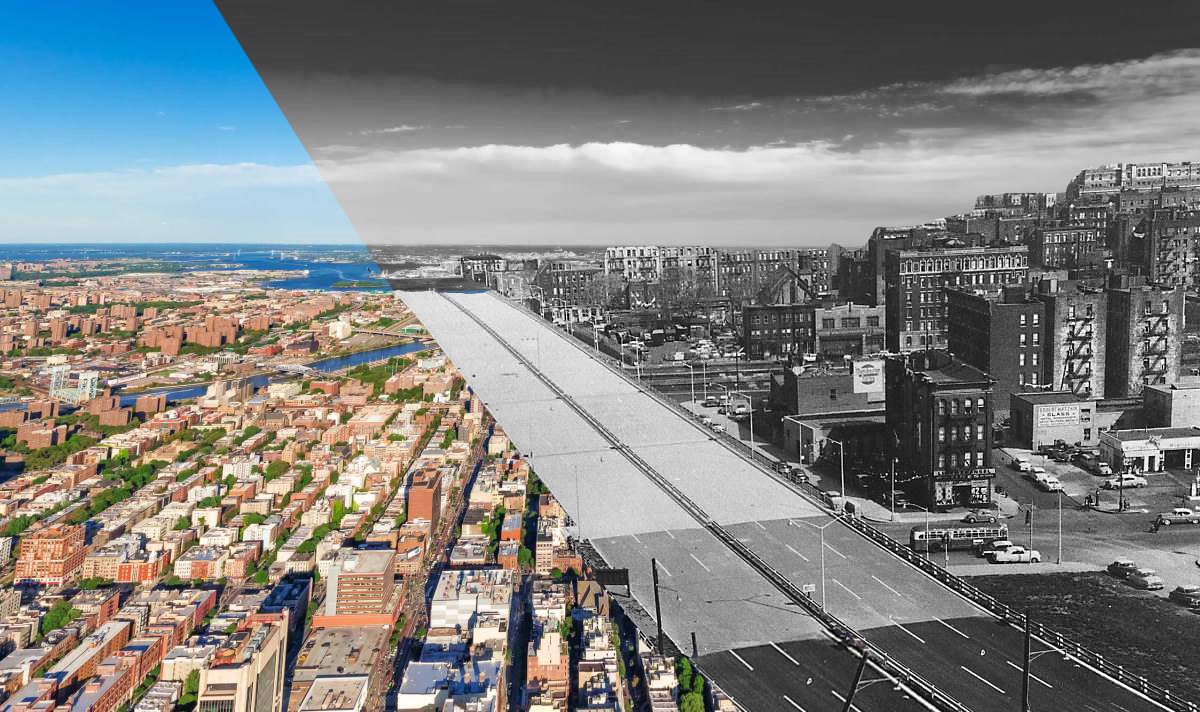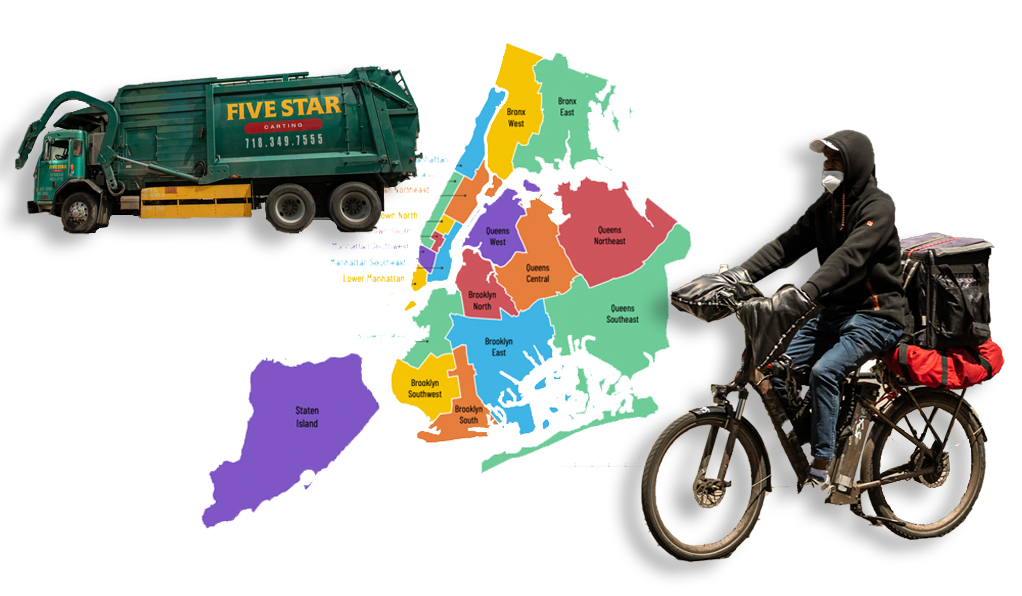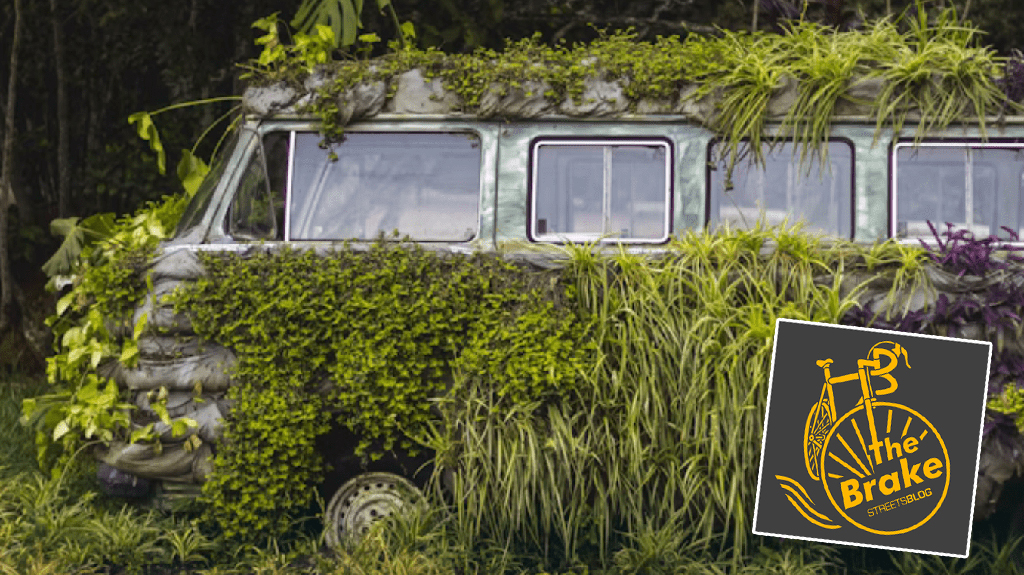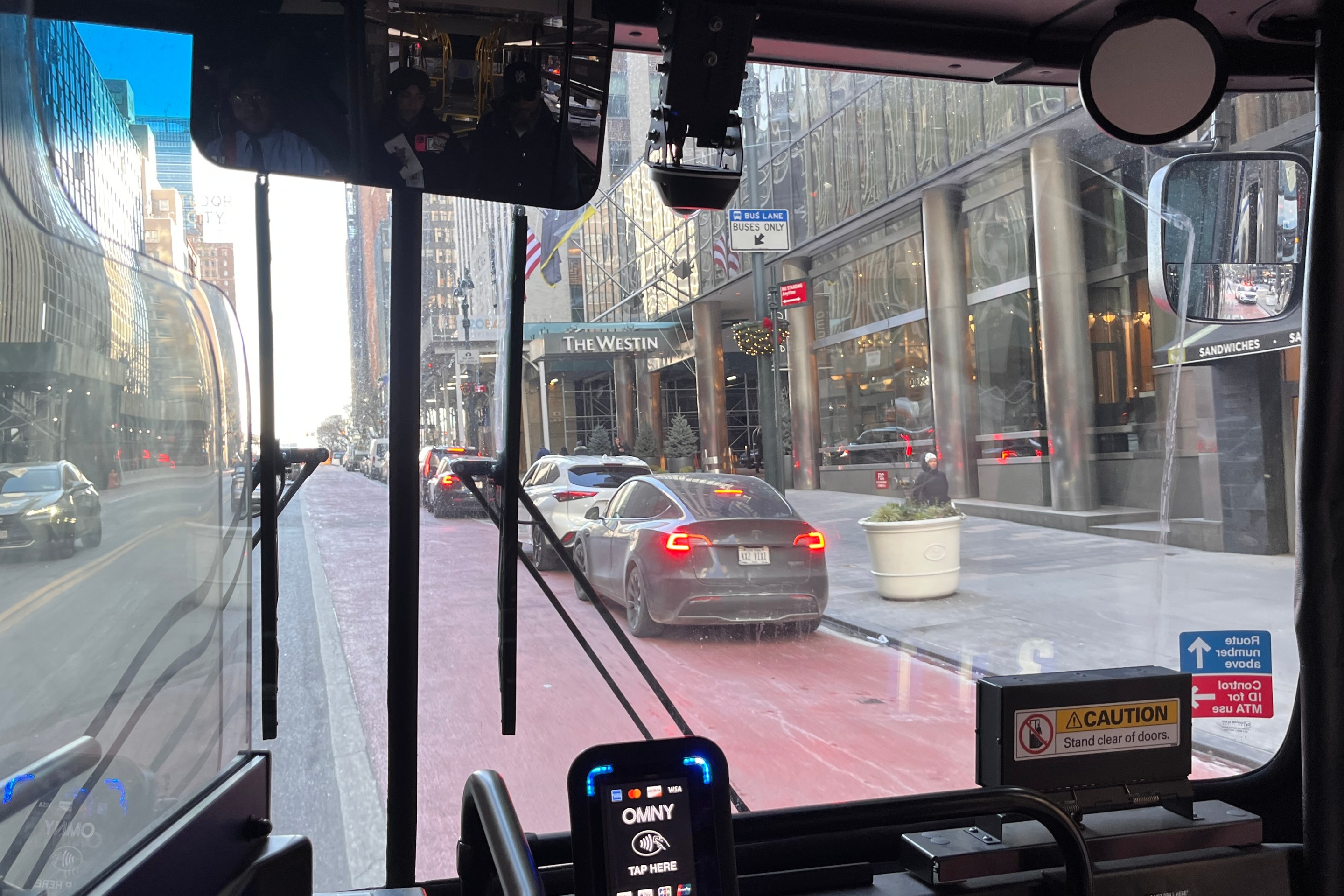It gets worse.
The New York State Department of Transportation, which is already widening the Cross Bronx Expressway by building a service road over a park in the south Bronx, is now planning a second piece of the "Orwellian" project, Streetsblog has learned.
As part of a project to replace an elevated section of the Cross Bronx Expressway between Webster and Third avenues beginning in 2027, the state DOT is also moving ahead with a second piece of its so-called "community connector" beyond what it is already planning between Boston Road and Rosedale Avenue.
According to a design contract Streetsblog obtained through a Freedom of Information law request, state DOT has tasked consultant Greenman-Pedersen with the with sketching out a "Multimodal Community Connector Roadway System."
And just as it did with the connector slightly to the east, the agency is greenwashing the mass of concrete by saying it is being built to accommodate a bus lane and a shared use path for pedestrians and cyclists.
"The Multimodal Community Connector Roadway Structure will tentatively include, in each direction, a bus priority lane, a local traffic lane, and a bicycle/pedestrian path," according to the contract.
The two road projects are part of a sprawling plan devised by state DOT in 2004 for what it called the Multi-Modal Cross Bronx Connector Road System, a concept that the agency said would allow for east-west travel in the borough that only has 12 roads that run all the way across it. The state pitched the idea in a 2004 study known as the Bronx Arterial Needs Major Investment Study, an attempt to create a comprehensive transportation plan for the entire borough.
The connector road system would run parallel to the Cross Bronx Expressway between University and Havemeyer avenues, allowing Bronx residents who want to travel locally to avoid the highway if they're moving east or west across the borough.
The full Bronx Arterial Needs Major Investment Study is not online, but a copy obtained by Streetsblog shows that the connector is no simple neighborhood road.
State DOT said the road would have a speed limit of 45 miles per hour, which is 20 miles per hour faster than the current city speed limit. In addition, most of the route simply doesn't exist in the physical world, so it would require building four lanes of traffic nestled against the Cross Bronx — and connecting that to a few streets that run parallel to the highway at various points, but not all the way across the borough.
The project is being pitched as stitching the Bronx back together after it was torn apart by highways, but it is, as a practical matter, a five-mile long service road for the Cross Bronx itself.
"You're tying [the neighborhoods] together for motorists in the neighborhood," said Dart Westphal, board member emeritus with the Bronx River Alliance. "We're not connecting people to be able to walk to the corner store. You're connecting people to be able to drive from West Farms to the mall in Co-op City."
Initial schematics of the connector road system shows that while it does connect with a few existing roads next to the highway, the vast majority of it would need to be new construction, including other pieces of the connector road built at the same grade as elevated sections of the Cross Bronx that currently exist.
State DOT never publicly revealed those schematics or its vision for the connector road system, outside of a vague drawing showing off a cross-section of the proposal that was included in the Bronx Arterial Needs Major Investment Study.
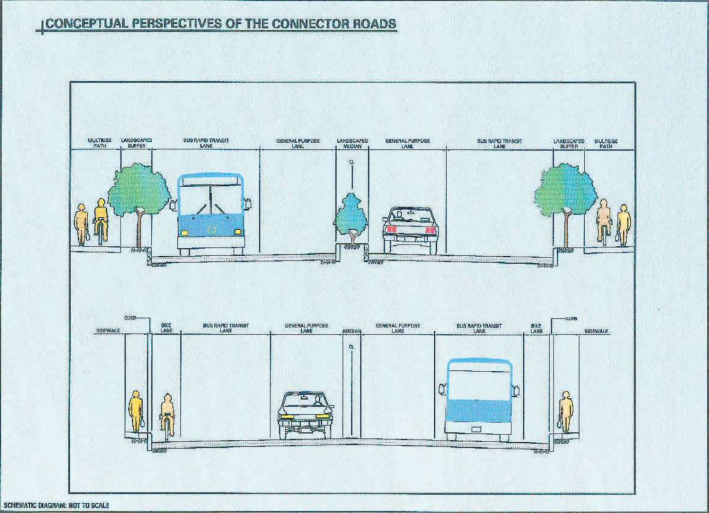
But the renderings of the first piece of the connector road system showed that it would be a hulking mass the size of the highway next to it. According to state DOT, the first piece of the road is being built to serve as a detour for traffic while an elevated portion of the Cross Bronx is knocked down and replaced. The four-lane, highway-sized structure is then supposed to remain in place, but would, the agency says, become a "multimodal" road with addition of a shared pedestrian/bike path and red paint for a bus lane.
It's unclear what bus would run on this initial piece of the road or on a completed version; the Bronx Arterial Needs Major Investment Study contemplated a bus rapid transit route, but never identified one (and, after all, the MTA and city DOT would make such decisions). The transit agency recently redesigned the bus network in the Bronx, which makes it unlikely it would reroute buses again to run on the possible new bus lane.
Despite the fact that the connector road system, if completed, would be an expansion of the highway, the state DOT is committed enough in its view that the connector road is not that, to the point the design guidelines only mentions induced demand once, in the context of bus lanes.
"Alternatives for the connector road should consider the induced demand provided by the bus rapid transit lanes proposed for one of the two lanes in each direction of the Connector Roads," the DOT advised in the contract.
The state DOT is also planning to get the federal government — via the Rebuilding American Infrastructure with Sustainability and Equity (RAISE) grant program — to pick up part of the tab for the highway expansion, per the contract.
The Federal Highway Administration has already given a $150-million grant to state DOT to build the first piece of the connector road, which Gov. Hochul and a host of Bronx elected officials celebrated in January as "a solid foundation to create the infrastructure needed to continue to reconnect this community."
Those words betray the electeds' stated goals of reducing the footprint, social damage and greenhouses gases attendant with urban highway, and neighborhood activists are calling bullshit.
"Any expansion, via connectors, to the CBE will result in lasting negative impacts to an already overburdened community," said Nilka Martell, the founder of Loving The Bronx, a community organization devoted to environmental issues in the Bronx. "These projects will only add more cars and trucks, resulting in more pollution. Basing decisions on results that were gathered pre-pandemic shouldn't be an option. The world changed after 2020, as well as the needs of the South Bronx. The community has a right to know how their tax dollars are being spent, and how this expansion will impact them before any firm decisions are made."
The project itself also works directly against the goals of the project to cap below grade sections of the Cross Bronx Expressway, which the federal, state and city DOT are currently working on. If the connector road project was completed as envisioned, the parks created on the capped sections of the highway would be bound in by the 45-mile-per-hour connector road.
"There needs to be a serious reckoning at NYSDOT about how it approaches highway projects," said Jaqi Cohen, the director of climate and equity policy at the Tri-State Transportation Campaig. "Exploring opportunities to cap the Cross Bronx, while simultaneously widening the highway, makes no sense. Widening the Cross Bronx will undermine any of the benefits won by capping it."
Interestingly, federal Deputy Secretary of Transportation Polly Trottenberg was recently talking about those very goals on the city DOT's new podcast, Curb Enthusiasm:
In OK, a flourishing black neighborhood was torn apart twice: once by the Tulsa Race Massacre, and again when we built an interstate through its center.@USDOT’s Polly Trottenberg discusses how we can heal these injustices on Curb Enthusiasm.
— NYC DOT (@NYC_DOT) September 16, 2024
Full ep: https://t.co/5yBHPhlqh9 pic.twitter.com/zvaCtGvFex
But advocates seized on the pols' rhetoric as evidence that they only talk a good game.
"It's the most Orwellian thing you can imagine when the U.S. DOT is trying to change the conversation about these urban highways, and [state DOT] is using that rhetoric to make it worse," said Jon Orcutt, a former city transportation official.
A spokesperson for the state DOT acknowledged the existence of the project.
"The Cross Bronx Expressway Viaduct over Webster Avenue and 3rd Avenues is reaching the end of its service life and NYSDOT has initiated a preliminary engineering agreement to determine feasible concepts to rehabilitate the structure, including the potential addition of a community connector," said NYSDOT Assistant Director of Communications Glenn Blain. "We are currently in the scoping and conceptual development phase of this project and NYSDOT remains committed to engaging with the community and key stakeholders as the process moves forward."
